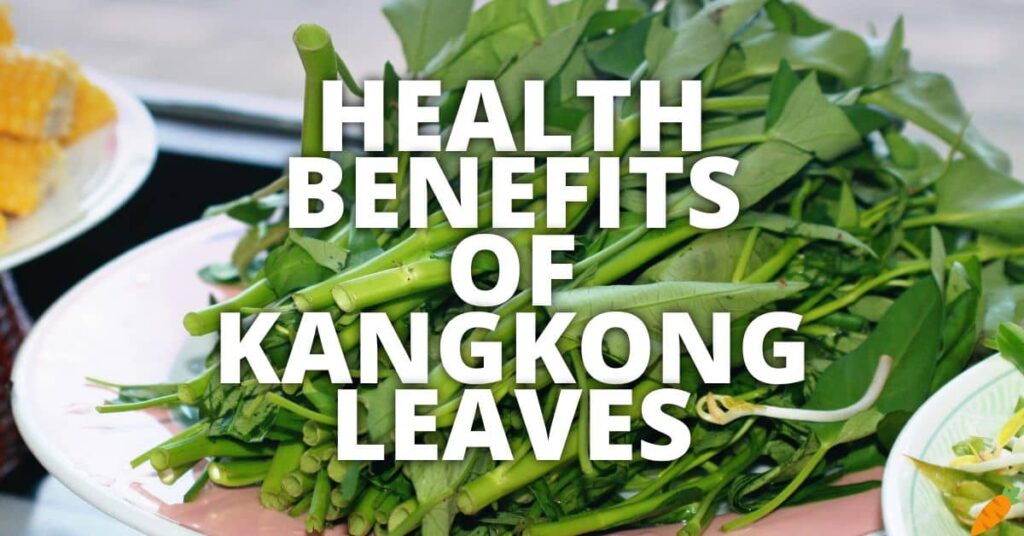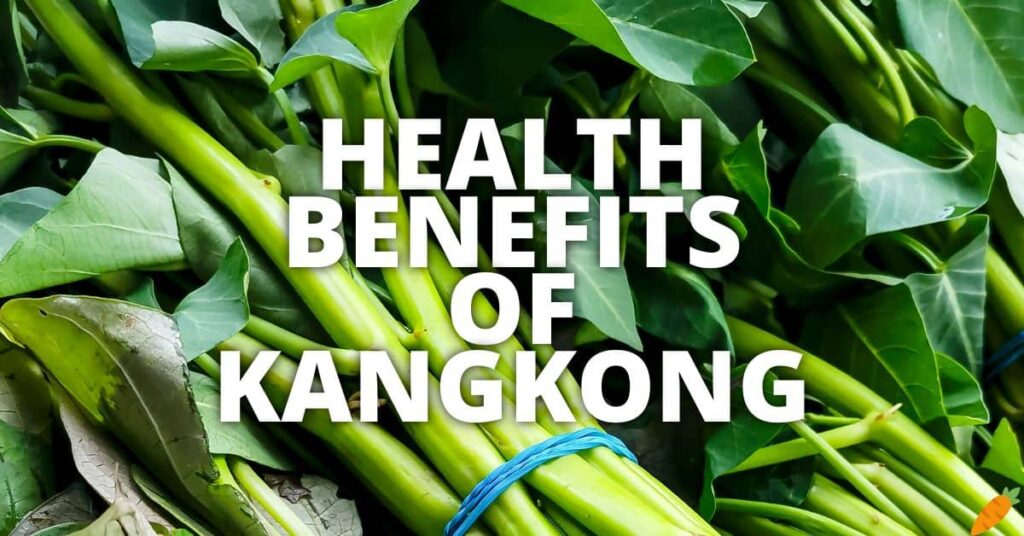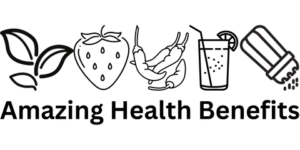Kangkong leaves are widely enjoyed in many Asian countries and are known for their mild taste and simple preparation.
They grow in moist areas and are easy to add to soups, stir-fries, and other everyday meals.
Many people value this vegetable because it offers several nutrients that play important roles in overall health.
We’ll learn about the potential health benefits of kangkong leaves and how they may support different parts of the body.
We’ll also see how proper cooking and preparation can help you get the most nutrients from this leafy vegetable.
1. Rich In Nutrients
Kangkong is a leafy green vegetable that is rich in important nutrients that support many body functions.
It is also known as water spinach and is popular in many Asian dishes because it is easy to cook and mild in flavor.
This vegetable is known as kangkong in several countries and is valued for its nutritional content.
It is also called swamp cabbage in some places because it grows well in wet and low areas.
The plant is part of the species Ipomoea aquatica, which is known for its long stems and tender leaves.
Kangkong contains vitamin A, which helps keep your eyes healthy and supports normal cell growth.
Vitamin A also helps the skin stay smooth and protects it from dryness.
Kangkong is a good source of vitamin C, which helps protect cells from damage caused by free radicals.
Vitamin C also helps the body absorb iron from plant foods and supports strong immunity.
This vitamin plays a part in forming collagen, which helps keep the skin and blood vessels strong.
Kangkong provides vitamin K, which helps the blood clot properly when you get a cut.
Vitamin K also works with calcium to keep bones firm and healthy.
The vegetable contains calcium, which is needed for strong bones and healthy teeth.
Calcium also helps muscles contract properly and supports normal nerve function.
Kangkong has iron, which helps carry oxygen through the blood to all parts of the body.
Iron also helps the body make energy, so you can stay active.
This vegetable contains potassium, which helps balance fluids in the body.
Potassium also supports normal heart rhythm and helps muscles work well.
Kangkong is rich in dietary fiber, which helps digestion and supports regular bowel movements.
Because of its broad mix of vitamins, minerals, and fiber, kangkong is a versatile and nutritious food that fits well in soups, salads, and stir-fries.
📙 Potential Health Benefits of Chaya
2. Support Eye Health
Kangkong supports eye health because it is rich in vitamin A, which is important for keeping the eyes working well.
Vitamin A helps the retina stay healthy so it can respond to light clearly.
It also supports the rod cells in the eyes that allow you to see in darker places, which may help lower the chance of night blindness.
People who do not get enough vitamin A may struggle with seeing at night or adjusting to dim light.
Vitamin A also helps keep the cornea smooth and protected, so the eyes do not become dry or irritated.
Healthy levels of this vitamin may lower the risk of eye conditions that come from dryness or surface damage.
Kangkong also contains lutein, a plant compound that can help protect the eyes from light-related stress.
Lutein may help filter harmful blue light, which supports long-term eye comfort and function.
The beta-carotene found in kangkong can be turned into vitamin A by the body, and adds more support for vision.
Beta-carotene works as an antioxidant that helps protect eye cells from damage caused by free radicals.
These antioxidants may help slow the development of age-related macular degeneration in older adults.
They may also play a role in lowering the risk of cataracts by protecting the eye’s natural lens.
Eating kangkong with other colorful vegetables can give the eyes a steady supply of nutrients that support clear and healthy vision.
📙 Potential Health Benefits of Moringa Leaves and Ginger
3. Boost The Immune System
Kangkong can help support the body’s natural defenses because it contains vitamin C, which is important for strong immunity.
Vitamin C helps the immune system work properly by supporting the growth and activity of white blood cells.
These cells protect the body from germs that can cause illness and help the body react quickly when an infection starts.
Vitamin C also works as an antioxidant that protects immune cells from damage caused by free radicals.
This protection allows the cells to stay active and respond well when the body needs them.
The vitamin also helps the skin stay firm and strong by supporting collagen production.
A strong skin barrier is important because it keeps many germs from entering the body.
Vitamin C can also help wounds heal faster by supporting the formation of new tissue.
Getting enough vitamin C may help shorten the duration of colds and make some symptoms less severe.
The vitamin also helps the body absorb iron from plant foods, which is needed for healthy immune function.
Adding kangkong to meals along with other vitamin C-rich foods can help keep your immunity strong throughout the year.
📙 Potential Health Benefits of Korean Sweet Potato
4. Promote Healthy Bones
Kangkong contains both calcium and vitamin K, which are essential nutrients for maintaining strong and healthy bones.
Including kangkong in your diet can help support bone health in several ways:
A. Calcium For Bone Strength
Calcium is a key building block for bones and teeth, ensuring they remain strong and dense.
Consuming adequate calcium helps prevent bone loss and the development of osteoporosis, a condition characterized by weak and brittle bones.
B. Vitamin K For Bone Metabolism
Vitamin K plays a crucial role in bone metabolism by helping the body use calcium effectively.
It aids in the production of a protein called osteocalcin, which helps bind calcium to the bone matrix, promoting bone mineralization and strength.
C. Synergistic Effects
Calcium and vitamin K work together to maintain optimal bone health.
While calcium provides the necessary building blocks for strong bones, vitamin K ensures that calcium is properly utilized and incorporated into the bone structure.
D. Additional Nutrients
Kangkong also contains other nutrients, such as magnesium and phosphorus, that contribute to bone health.
These minerals play a role in bone formation and maintenance.
E. Benefits For All Ages
Consuming adequate calcium and vitamin K throughout your life is essential for maintaining strong bones, from childhood to old age.
This helps reduce the risk of fractures and bone-related conditions as you grow older.
To support bone health, it’s important to include kangkong and other calcium- and vitamin K-rich foods in your diet, such as dairy products, leafy greens, and fortified foods.
Additionally, engaging in regular weight-bearing exercise and getting enough vitamin D from sunlight or supplements can help keep your bones strong and healthy.
📙 Potential Health Benefits of Dahon Ng Sili

5. Enhance Digestion
Kangkong’s fiber content can play a significant role in supporting healthy digestion.
Dietary fiber is essential for maintaining optimal digestive health, and incorporating kangkong into your diet can provide various digestive benefits.
Here are some ways fiber from kangkong can enhance digestion:
A. Improves Regularity
Fiber adds bulk to the stool, making it easier to pass and helping prevent constipation.
B. Supports Healthy Gut Bacteria
Fiber acts as a prebiotic, feeding the beneficial bacteria in the gut, which in turn supports overall digestive health and immune function.
C. Reduces The Risk Of Hemorrhoids
By promoting regular bowel movements, fiber can help reduce the risk of developing hemorrhoids and other conditions related to straining during bowel movements.
D. Aids In Weight Management
High-fiber foods like kangkong can help you feel full longer, reducing your overall calorie intake and supporting healthy weight management.
E. Supports Healthy Blood Sugar Levels
Fiber slows down the absorption of sugar into the bloodstream, helping to maintain stable blood sugar levels, which is particularly important for people with diabetes or prediabetes.
F. Lowers Cholesterol Levels
Soluble fiber found in kangkong can help lower LDL (bad) cholesterol levels by binding to cholesterol and removing it from the body through the digestive system.
Incorporating kangkong and other fiber-rich foods such as whole grains, legumes, fruits, and vegetables into your diet can help support healthy digestion and provide additional health benefits.
It’s essential to gradually increase your fiber intake and stay well hydrated to avoid potential digestive discomfort.
📙 Potential Health Benefits of Water Spinach
6. Support Heart Health
Kangkong’s potassium content can contribute to better heart health.
Potassium is an essential mineral that plays a key role in maintaining a healthy cardiovascular system.
Here are some ways potassium from kangkong can support heart health:
A. Regulates Blood Pressure
Potassium helps to relax blood vessel walls, which can lower blood pressure and reduce the strain on the heart.
B. Balances Sodium Levels
A diet high in potassium can help counterbalance the negative effects of excessive sodium intake, which is associated with high blood pressure and an increased risk of heart disease.
C. Supports Heart Muscle Function
Potassium is essential for proper muscle contraction, including the heart muscle. It helps to maintain a regular heartbeat and prevent arrhythmias.
D. Reduces The Risk Of Stroke
Studies have shown that a diet rich in potassium may reduce the risk of stroke by helping to prevent the formation of blood clots and promoting overall cardiovascular health.
E. Supports Kidney Function
Healthy kidney function is essential for maintaining optimal blood pressure levels.
Potassium helps the kidneys filter excess sodium from the body, which in turn supports heart health.
Incorporating kangkong and other potassium-rich foods like bananas, potatoes, and beans into your diet can help support heart health and reduce the risk of heart disease.
It’s important to maintain a balanced diet, get regular exercise, and avoid smoking and excessive alcohol consumption for overall heart health.
📙 Potential Health Benefits of Puntarelle
7. Improve Skin Health
Kangkong’s vitamin A and C content can have a positive impact on skin health.
Both vitamins play essential roles in maintaining healthy skin and may contribute to a more youthful appearance.
Here’s how kangkong’s vitamins A and C can benefit your skin:
A. Collagen Production
Vitamin C is crucial for collagen synthesis, a protein that gives your skin strength and elasticity.
Collagen production naturally declines with age, so consuming vitamin C-rich foods like kangkong can help maintain a firm and youthful skin texture.
B. Skin Cell Regeneration
Vitamin A supports skin cell turnover by promoting the growth of new, healthy skin cells and helping to shed old, damaged ones.
This process can lead to a smoother, more even complexion.
C. Moisture Retention
Vitamin A helps maintain the skin’s moisture barrier, preventing dryness and dehydration, which can contribute to a dull, aged appearance.
D. Wound Healing
Both vitamins A and C are essential for proper wound healing, as they support skin repair and the formation of new blood vessels.
E. Antioxidant Protection
Antioxidants like vitamins A and C work to shield the skin from free radical damage that can result from exposure to UV rays and pollution in the environment.
This protection can help slow down the aging process and prevent the formation of fine lines and wrinkles.
F. Anti-Inflammatory Effects
Vitamin A has anti-inflammatory properties that can help reduce redness and inflammation, leading to a more even and balanced skin tone.
By including kangkong and other vitamin A and C-rich foods in your diet, such as carrots, citrus fruits, and leafy greens, you can support healthy skin and potentially slow down the aging process.
However, it’s also important to maintain a consistent skincare routine, protect your skin from excessive sun exposure, and stay well hydrated for overall skin health.
📙 Potential Health Benefits of Bush Banana
8. Supports Healthy Pregnancy
Kangkong’s folic acid content can play a vital role in supporting a healthy pregnancy.
Folic acid, also known as folate or vitamin B9, is an essential nutrient for pregnant women, as it helps prevent birth defects and supports the healthy development of the fetus.
Here are some ways folic acid in kangkong can contribute to a healthy pregnancy:
A. Neural Tube Defect Prevention
Folic acid is crucial during the early stages of pregnancy for preventing neural tube defects (NTDs) such as spina bifida and anencephaly, which can affect the baby’s brain and spinal cord.
B. DNA Synthesis
Folic acid plays a role in the synthesis of DNA and RNA, which are essential for the growth and development of the fetus.
C. Red Blood Cell Production
Folic acid supports the production of red blood cells, which are vital for transporting oxygen and nutrients to the developing fetus.
D. Reduced Risk Of Preterm Birth
Adequate folic acid intake during pregnancy has been linked to a reduced risk of preterm birth, ensuring the baby has sufficient time to develop in the womb.
E. Supports Maternal Health
Folic acid also plays a role in the overall health of the pregnant woman, reducing the risk of anemia and supporting a healthy nervous system.
To support a healthy pregnancy, it’s important for women who are pregnant or planning to become pregnant to consume adequate amounts of folic acid through their diet.
Including kangkong and other folate-rich foods, such as lentils, fortified cereals, and leafy greens, can help meet the recommended daily intake.
📙 Potential Health Benefits of Taro Leaves
9. Aid In Weight Management
Kangkong’s low calories and high fiber content make it an excellent choice for those looking to maintain or achieve a healthy weight.
Including kangkong in your diet can offer several weight management benefits:
A. Low-Calorie Content
Kangkong is a low-calorie vegetable, allowing you to enjoy larger portions without significantly increasing your calorie intake.
B. High Fiber Content
Fiber-rich foods like kangkong can help you feel full and satisfied for longer periods, reducing the likelihood of overeating or indulging in unhealthy snacks.
C. Nutrient-Dense
Kangkong provides essential vitamins and minerals without adding many calories, supporting overall health and making it easier to stick to a balanced diet.
D. Versatility In Recipes
Kangkong can be used in various dishes, such as salads, stir-fries, and soups, allowing you to add variety to your diet while still focusing on weight management.
E. Hydration
Kangkong has a high water content, which can help keep you hydrated and contribute to feelings of fullness.
F. Low Glycemic Index
Foods with a low glycemic index, like kangkong, can help maintain stable blood sugar levels by reducing cravings and promoting better appetite control.
Incorporating kangkong and other low-calorie, high-fiber foods into your diet can support weight management by helping you feel full and satisfied without consuming excessive calories.
However, it’s essential to maintain a balanced diet, practice portion control, and engage in regular physical activity for overall weight management success.
📙 Potential Health Benefits of Common Purslane

10. Provide Antioxidant Benefits
Kangkong, a cherished green leafy vegetable, is laden with various health benefits, primarily due to its rich content of vitamins like C and E.
These vitamins confer kangkong with robust antioxidant properties.
Antioxidants are vital in combating oxidative stress, a factor that contributes to cellular damage and can accelerate the aging process.
With its potential anti-aging benefits, consuming kangkong might help maintain a youthful appearance.
Moreover, these antioxidants can play a role in warding off certain diseases.
By integrating kangkong into your diet, you not only enjoy its flavors but also improve your overall health by harnessing its protective qualities.
📙 Potential Health Benefits of Lamb’s Quarters
11. Support Mental Health
Kangkong’s folate content can have a positive impact on mental health.
Folate, also known as vitamin B9 or folic acid, plays a vital role in the production of neurotransmitters such as serotonin, which are essential for mood regulation and overall mental well-being.
Here are some ways folate in Kangkong can support mental health:
A. Serotonin Production
Folate is involved in the synthesis of serotonin, a neurotransmitter that contributes to feelings of happiness and well-being.
Adequate serotonin levels are important for maintaining a balanced mood and preventing mood disorders.
B. Reducing Depression Risk
Studies have shown that low folate levels are associated with an increased risk of depression.
Consuming folate-rich foods like kangkong may help maintain proper neurotransmitter function and reduce the risk of developing depression.
C. Supporting Brain Function
Folate is essential for proper brain function, and consuming adequate amounts of this nutrient can help support cognitive processes such as memory, learning, and concentration.
D. Regulating Homocysteine Levels
Folate helps regulate homocysteine, an amino acid that, in high levels, has been linked to an increased risk of cognitive decline and dementia.
By maintaining healthy homocysteine levels, folate may help protect brain health.
E. Assisting In Stress Management
Folate plays a role in the production of other neurotransmitters, such as dopamine and norepinephrine, which are involved in the body’s stress response.
Consuming adequate folate may help support the body’s ability to manage stress effectively.
Incorporating kangkong and other folate-rich foods, such as leafy greens, beans, and fortified cereals, into your diet can help support mental health and promote overall well-being.
In addition to a balanced diet, practicing stress management techniques, getting regular exercise, and ensuring proper sleep are essential for maintaining good mental health.
📙 Potential Health Benefits of Celery Leaves
12. Anti-Inflammatory (My Favorite Potential Health Benefit Of Kangkong Leaves) ⭐
Kangkong is not just a flavorful ingredient; it’s a green leafy vegetable packed with beneficial compounds.
One of its notable benefits is its potential anti-inflammatory effects.
These effects arise from specific compounds present in the vegetable, making kangkong a promising food for those with inflammatory conditions such as arthritis.
Kangkong is also a versatile addition to various dishes, allowing for easy incorporation into meals.
Regular consumption of this vegetable might offer relief from inflammation-related symptoms.
Therefore, making kangkong a part of one’s diet can provide not only taste but also potential health advantages.
📙 Potential Health Benefits of Ube
13. Diabetes Management
Kangkong is rich in dietary fiber, which plays a key role in stabilizing blood sugar levels.
When consumed, fiber slows the absorption of sugar, leading to a more gradual rise in blood sugar.
This can be especially beneficial for diabetics, helping to prevent sudden spikes.
Including kangkong in meals can assist in maintaining consistent glucose levels.
As a result, incorporating this vegetable can be a positive dietary choice for those managing diabetes.
📙 Different Vegetables Potentially Promote Better Health Outcomes
14. This Vegetable Helps With Detoxification
Kangkong contains compounds that support the liver’s detoxification processes.
The liver is our primary organ for filtering and removing toxins from the bloodstream.
By aiding the liver, kangkong can help enhance the body’s ability to cleanse itself.
Consuming this vegetable may contribute to flushing out harmful substances.
Thus, including kangkong in one’s diet can bolster overall detoxification efforts.
📙 Exceptional Potential Wellness Results
15. How Cooking Methods Change the Nutrients in Kangkong
Cooking kangkong in different ways can change how many nutrients stay in the leaves and how much the body can use them.
Quick stir-frying or steaming helps keep more vitamin C because these methods use short cooking times and less water.
For some people, kangkong is eaten raw, but cooking it lightly can make certain nutrients easier to absorb.
Boiling kangkong can lower its nitrate levels since nitrates move into the cooking water during heating.
Boiling may also reduce soluble oxalates, which can be helpful for people who need to limit oxalate buildup.
Kangkong can also be added to a stew, which lets the nutrients stay in the broth instead of being lost in discarded water.
Choosing the right cooking method can help you keep more nutrients while removing some unwanted compounds from the vegetable.
💡 Conclusion
Kangkong leaves offer many helpful nutrients that can support different parts of the body when eaten as part of a balanced diet.
They may benefit the eyes, heart, skin, digestion, and even mental well-being through their natural vitamins and plant compounds.
Cooking them the right way can also help you keep more nutrients while lowering some unwanted substances.
Adding kangkong to meals is simple because it works well in many dishes and fits easily into everyday cooking.
With proper preparation and mindful choices, this vegetable can be a steady and useful part of healthy eating.
⛑️ Safety First
While kangkong leaves have potential health benefits, some of these benefits might be based on anecdotal evidence.
Individuals with specific health conditions or those on medication should be cautious.
Before adding kangkong to your diet, it’s essential to consult with a doctor.
Always conduct your own research and seek advice from a healthcare professional.
Remember, these are potential benefits, and individual experiences may vary.
⚠️ Content Disclaimer
This article is not medical advice and should not replace guidance from a licensed health professional.
The information shared here is based on general knowledge about food and wellness and may not apply to every person.
Always talk to a doctor or other qualified expert if you have health concerns or special dietary needs.
You should not use this article to diagnose or treat any condition on your own.
You may treat this article for entertainment purposes while also using it to learn simple facts about kangkong leaves.
❓ FAQs
1. Is it safe to eat kangkong every day?
Yes, kangkong is generally safe to eat every day when it is washed and cooked well.
It provides vitamins and minerals that support different parts of the body.
People with special health concerns should talk to a doctor if they need limits on certain nutrients.
2. What is the best way to cook kangkong to keep its nutrients?
Quick stir-frying or steaming can help keep more heat-sensitive nutrients like vitamin C.
These methods use short cooking times, which helps the leaves stay full of their natural goodness.
Boiling is fine too, but it may remove some vitamins into the water.
3. Can kangkong help with digestion?
Yes, kangkong contains fiber that can support regular bowel movements.
Fiber also helps feed good bacteria in the gut, which supports overall digestive health.
Eating fiber-rich foods may also help control hunger and support a healthy weight.
4. Is kangkong good for people with diabetes?
Kangkong may help manage blood sugar because its fiber slows how fast sugar enters the bloodstream.
This can help prevent sudden spikes after meals.
People with diabetes should still follow their healthcare provider’s advice when planning meals.
5. Are there any people who should be careful when eating kangkong?
People with kidney problems may need to limit potassium-rich foods, including kangkong.
Those who take blood-thinning medication may also need to watch their vitamin K intake.
It is best to ask a doctor if kangkong fits well with your health needs.

